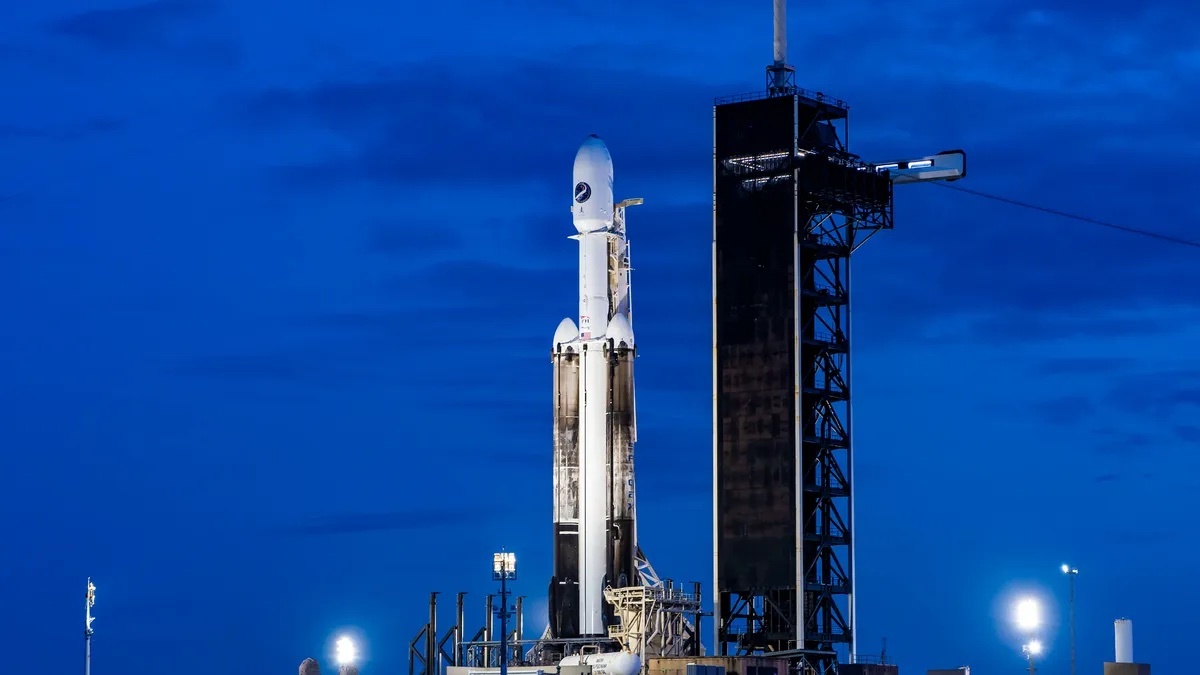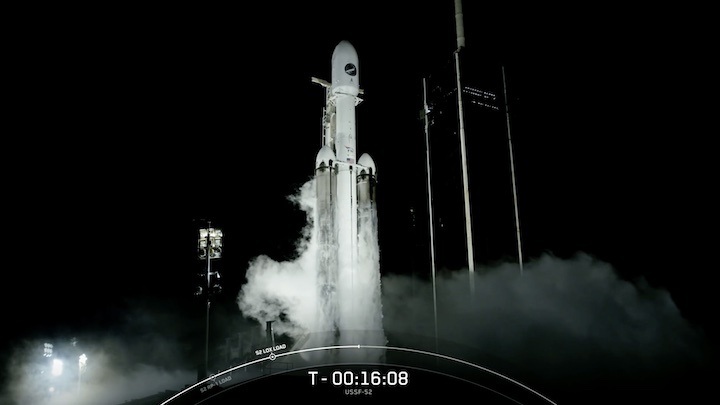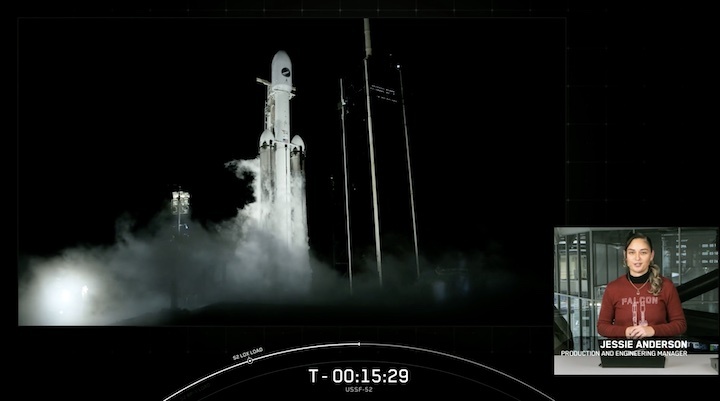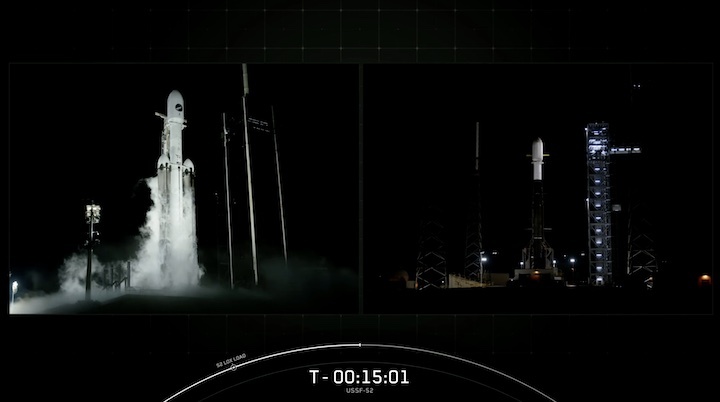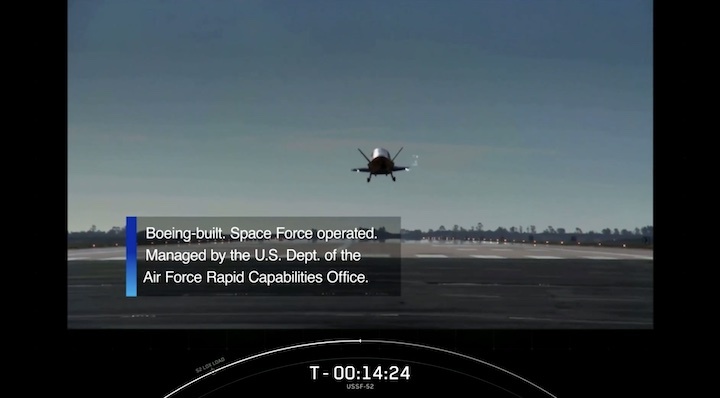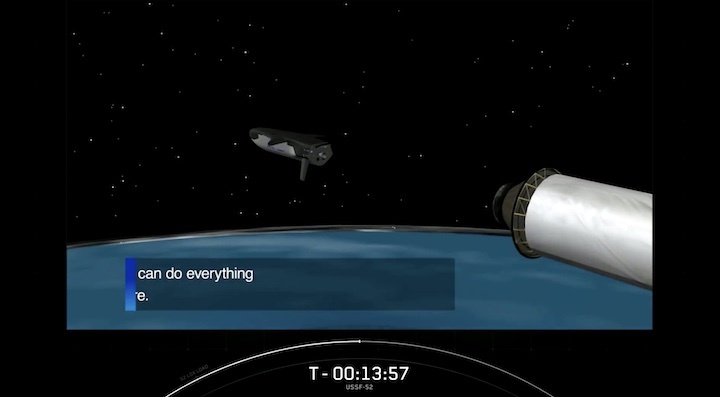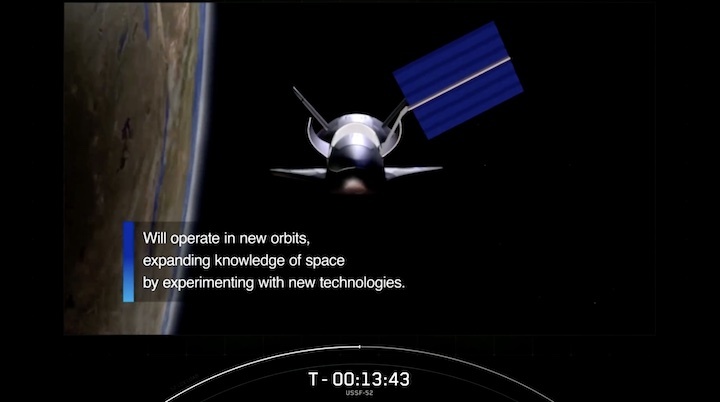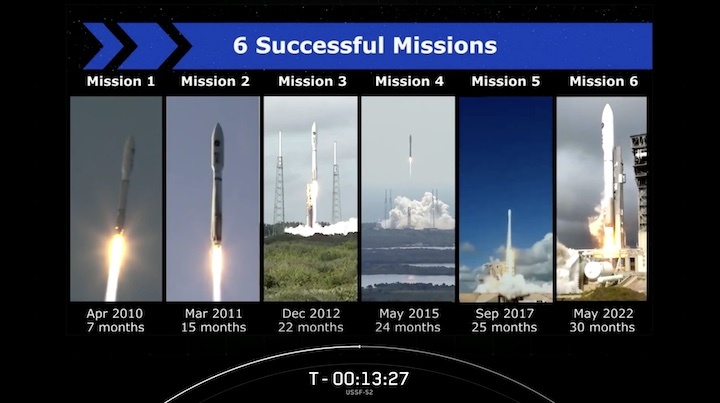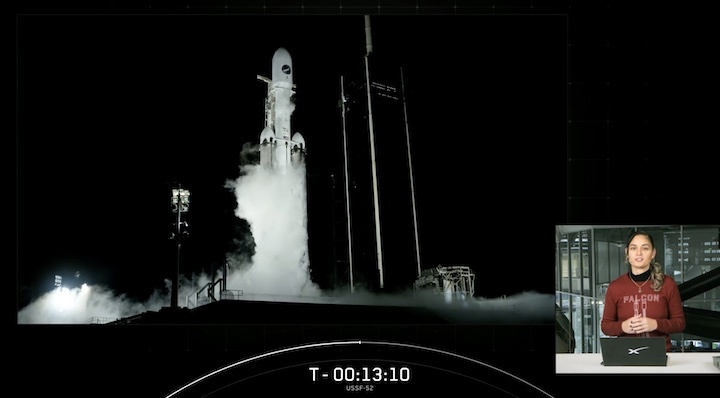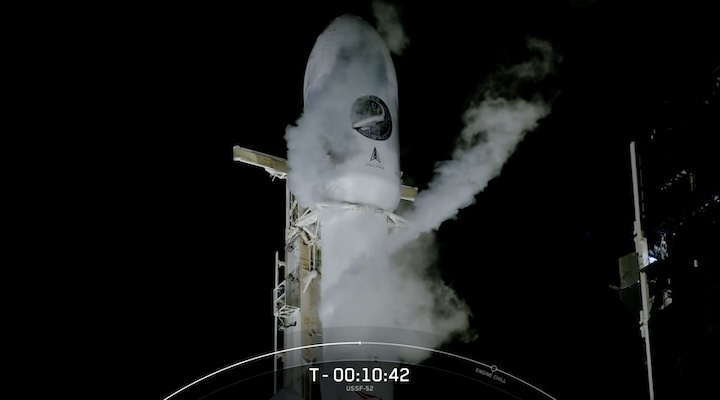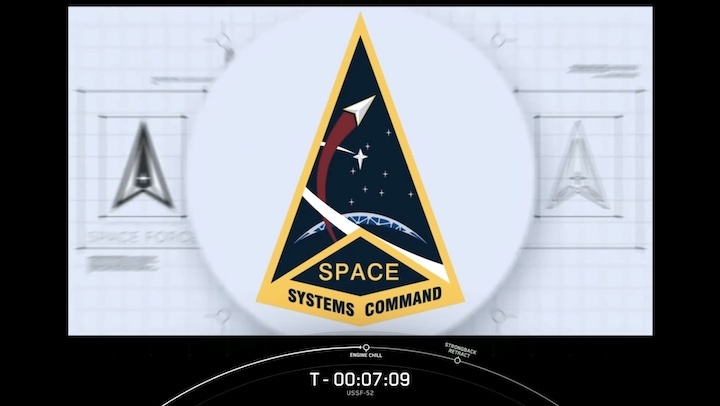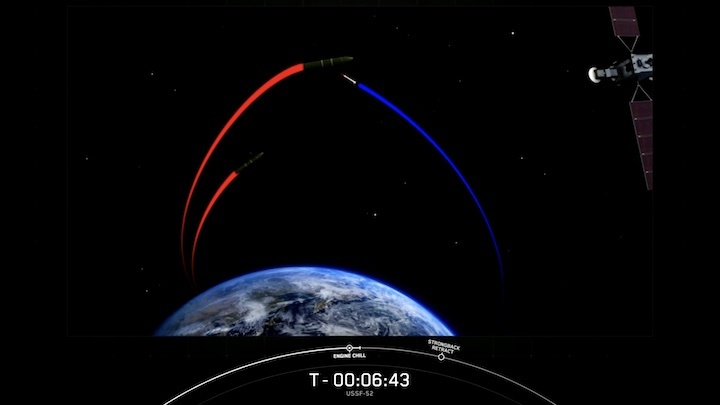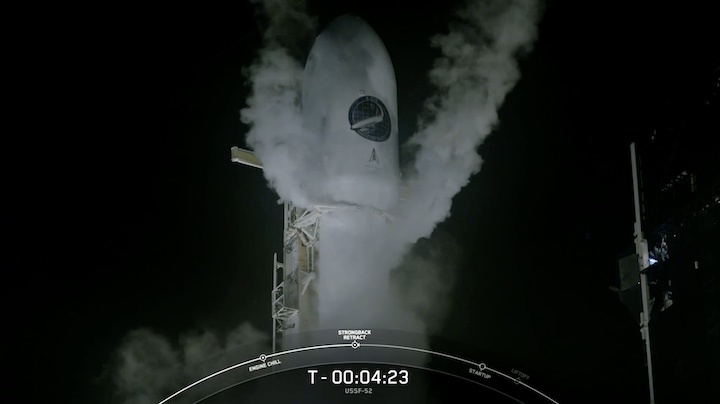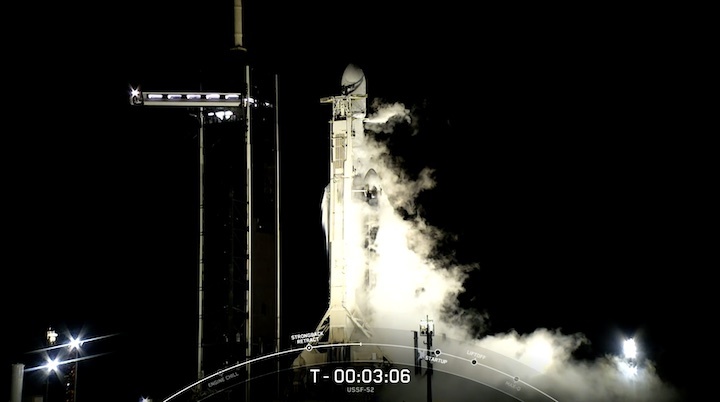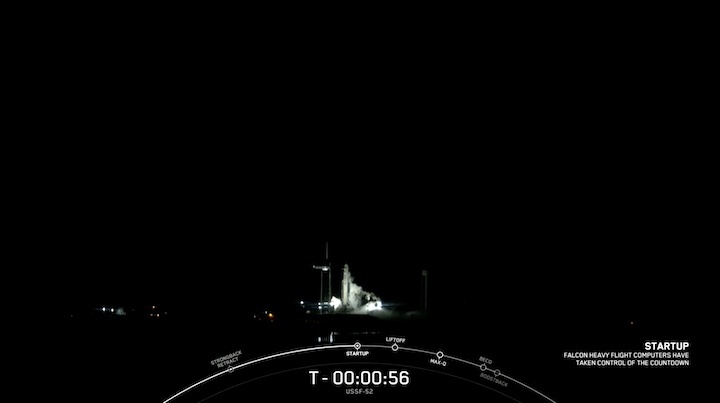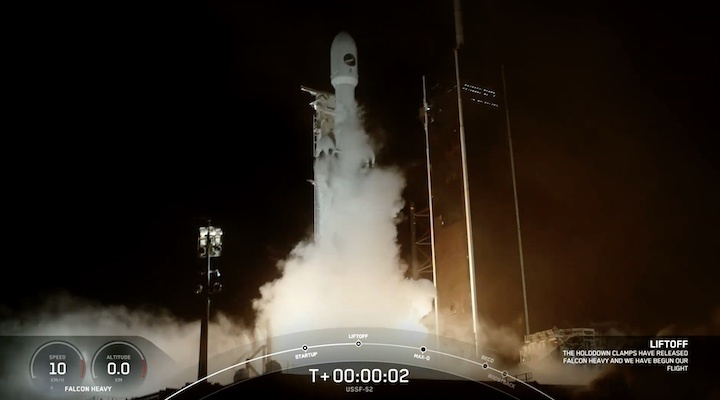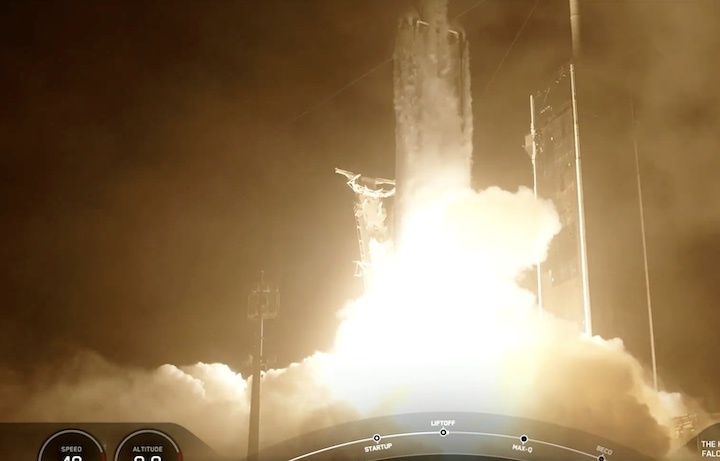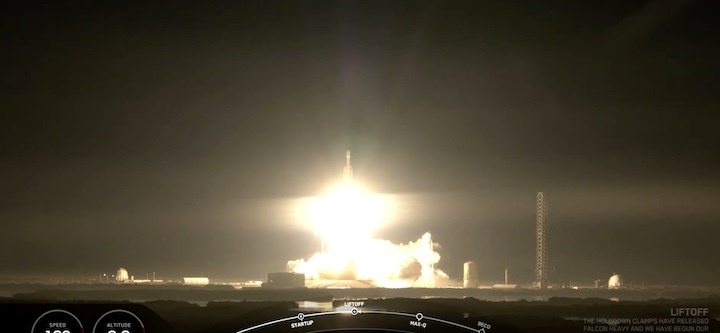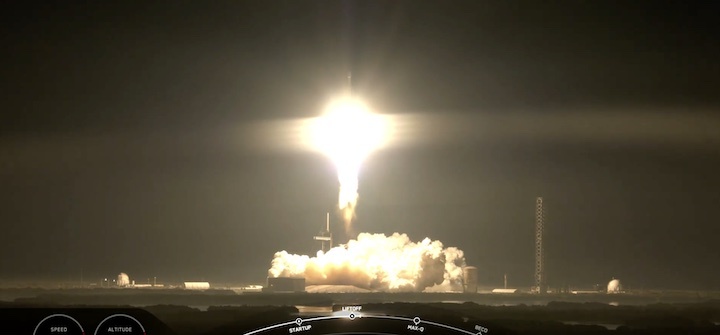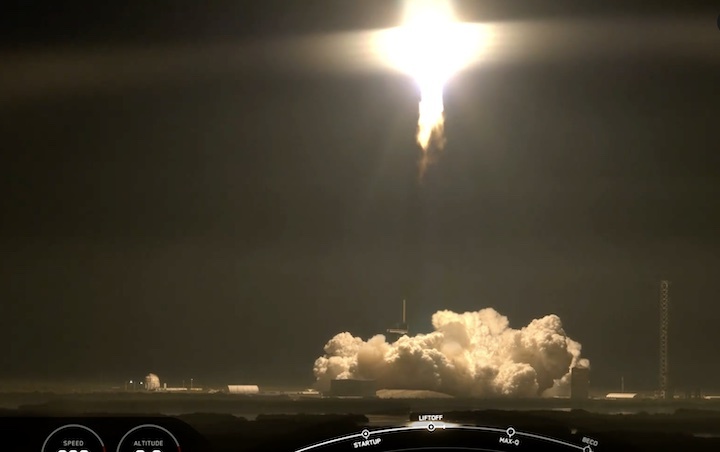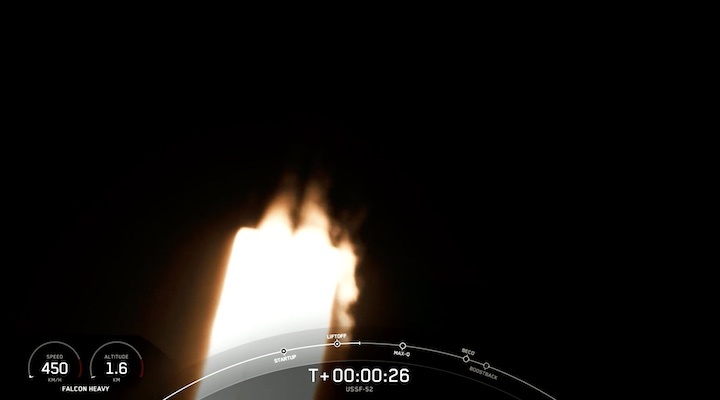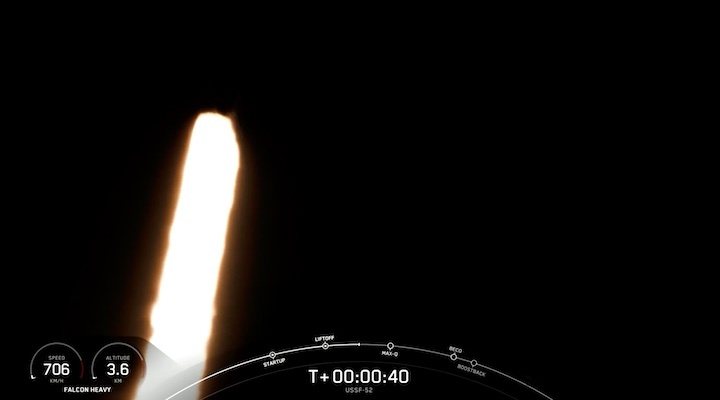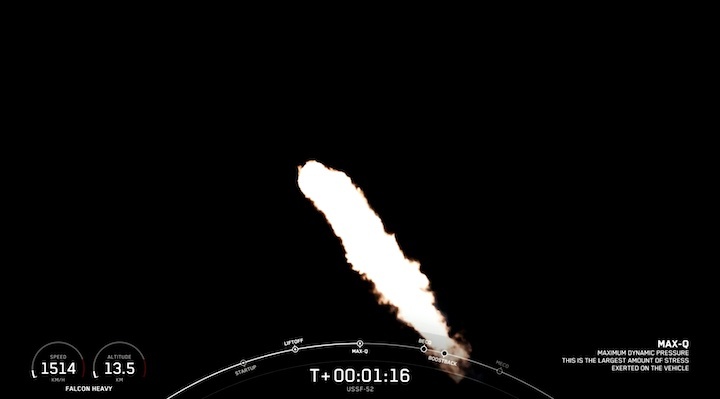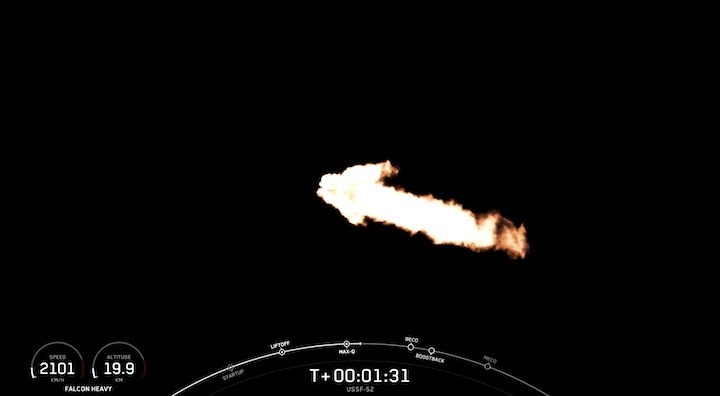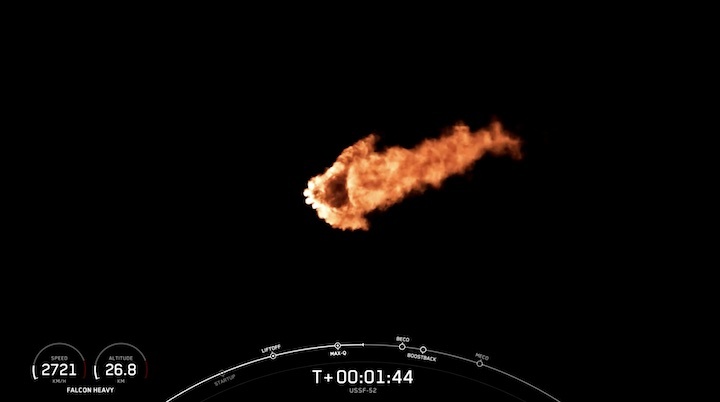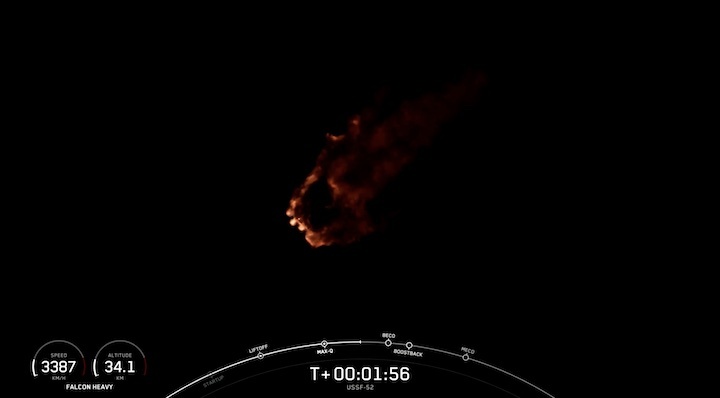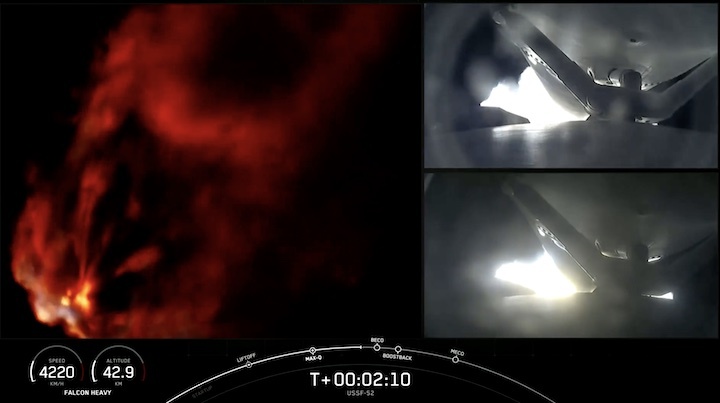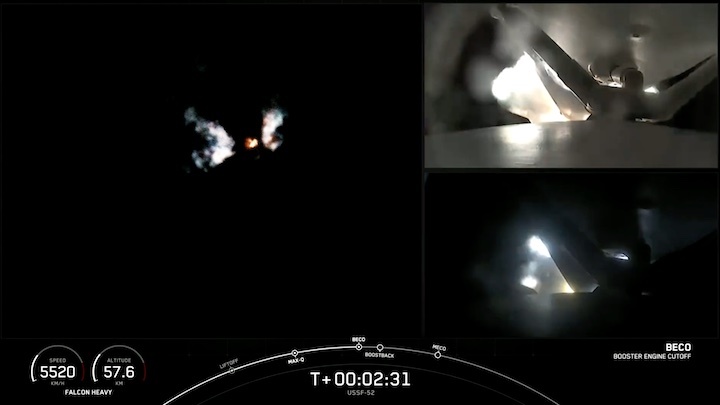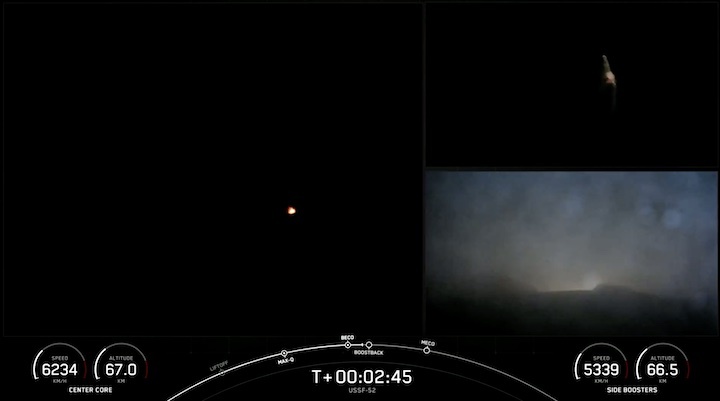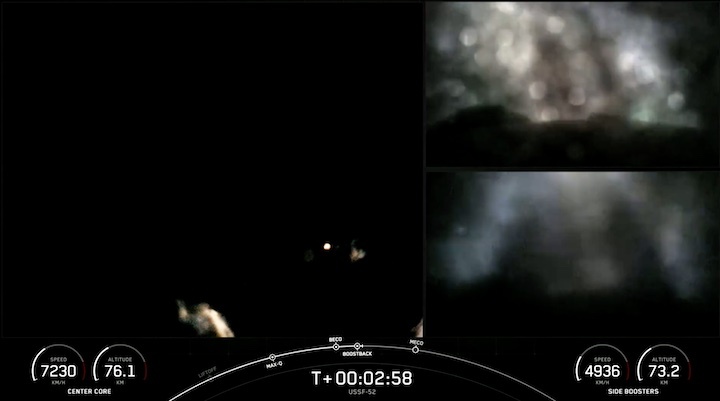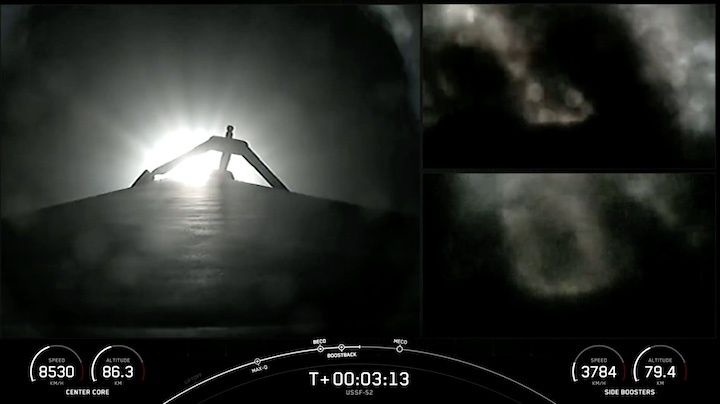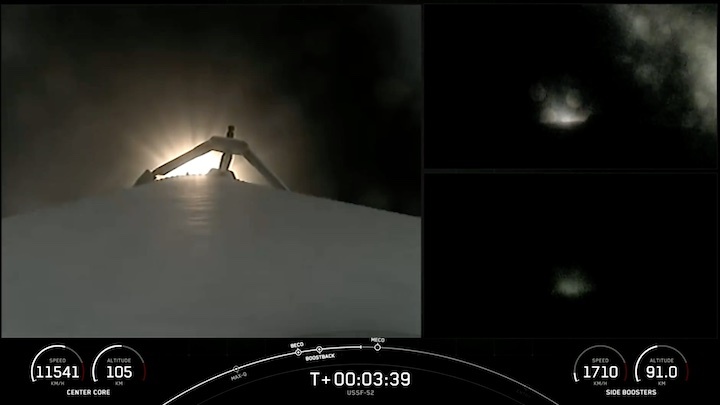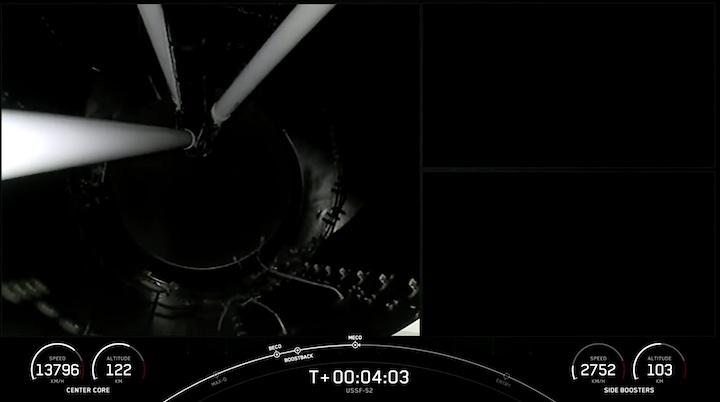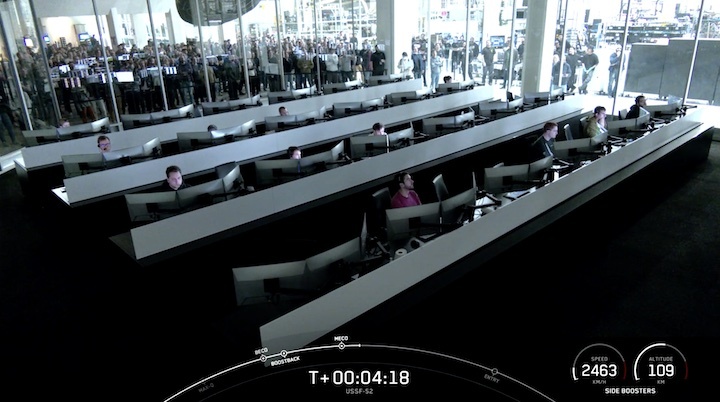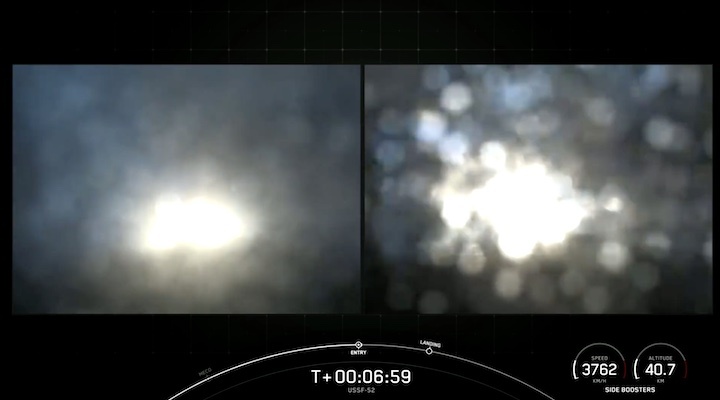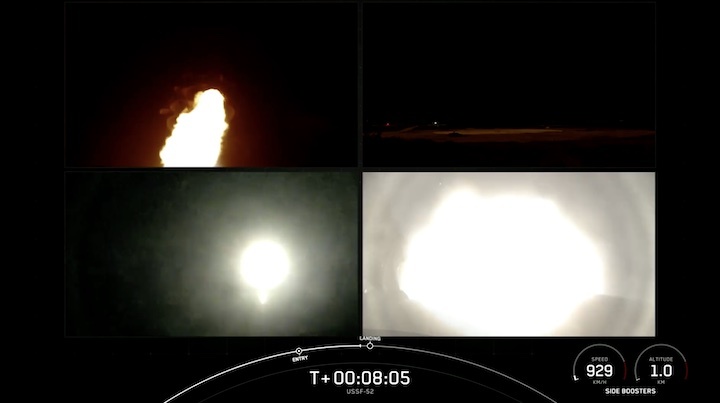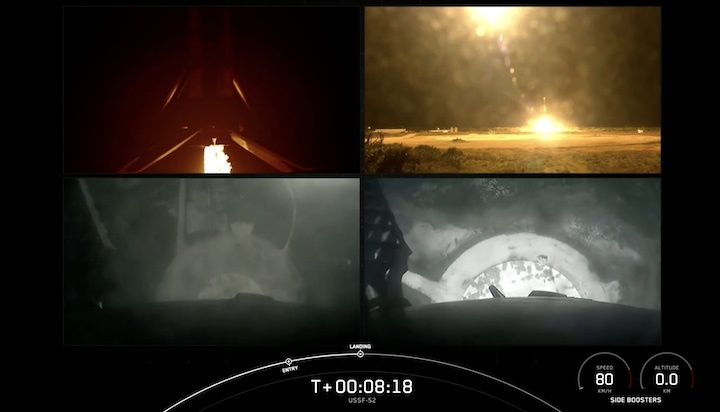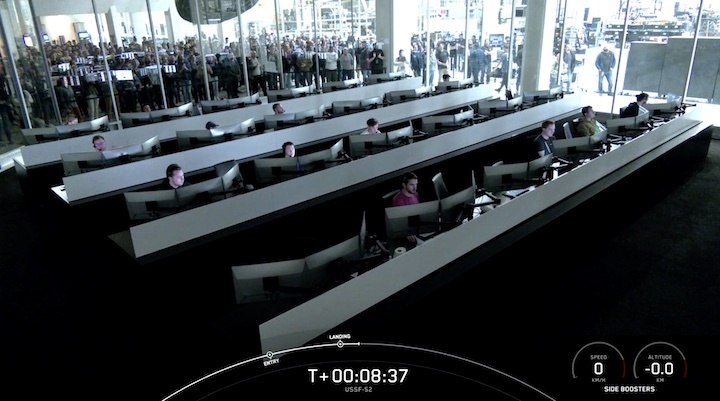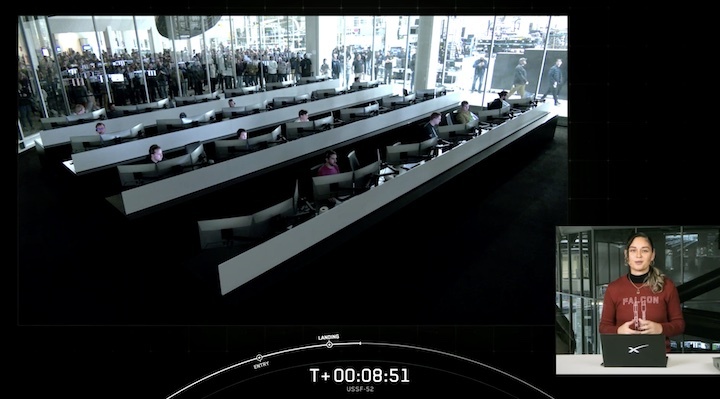10.11.2023
U.S. Air Force X-37B spaceplane to launch on a SpaceX Falcon Heavy rocket
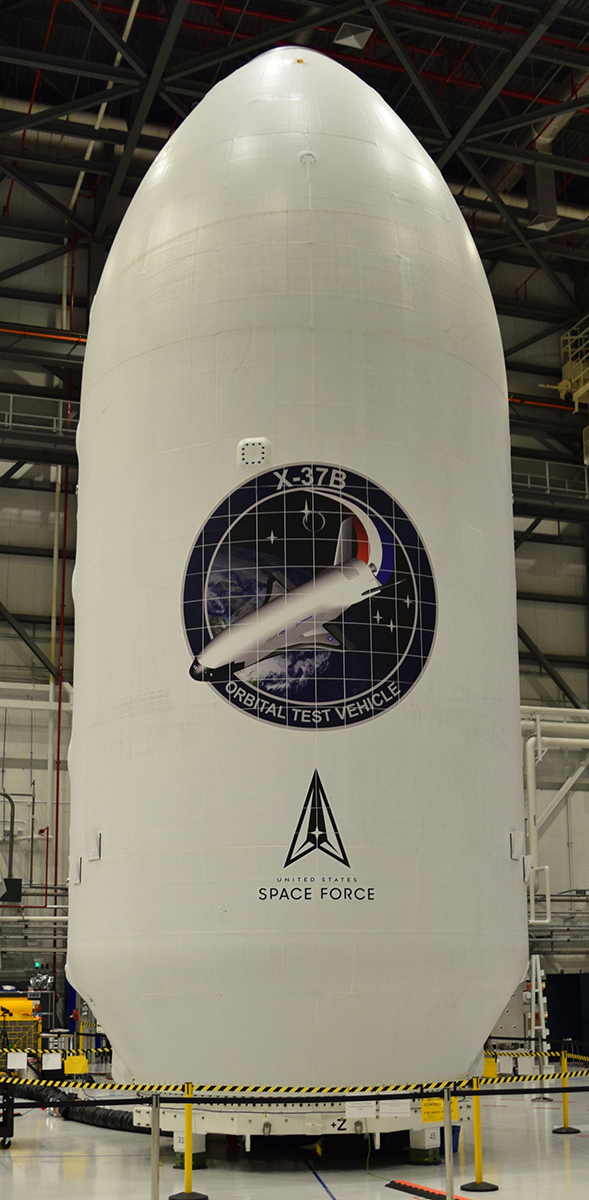
The spaceplane is built by Boeing and operated by the Air Force Rapid Capabilities Office and the U.S. Space Force. The upcoming mission will be Orbital Test Vehicle 7.
The X-37B will launch on a SpaceX Falcon Heavy rocket for the first time.
The mission, designated USSF-52, will conduct a wide range of tests, including operating the reusable spaceplane in new orbital regimes, experimenting with space domain awareness technologies, and investigating the radiation effects on materials provided by NASA, the Space Force said in a statement Nov. 8.
“We are excited to expand the envelope of the reusable X-37B’s capabilities,” said Lt. Col. Joseph Fritschen, the X-37B program director.
The NASA experiment onboard, known as Seeds-2, will expose plant seeds to the harsh radiation environment of long-duration spaceflight.
SpaceX was awarded a $130 million contract in June 2018 to launch USSF-52. The mission was originally scheduled to launch in 2021 and has been delayed by payload and range availability.
Most recent mission set endurance record
The most recent X-37B mission, OTV-6, launched in May 2020 on a United Launch Alliance Atlas 5, and landed in November 2022 after setting a new endurance record, spending 908 days on orbit.
The X-37B spaceplane is a derivative of the X-37A designed by NASA in the late 1990s to deploy from the Space Shuttle. The program later was transferred to the Defense Department. There are two X-37B spacecraft, which were originally designed for missions of 270 days, but have greatly exceeded that goal since the spaceplane’s first mission in 2010.
The Air Force for a decade kept the X-37B in a cloak of secrecy, but the Space Force is now showcasing it.
Quelle: SN
----
Update: 14.11.2023
.
DoD's secret spaceplane to launch on SpaceX Falcon Heavy rocket
The launch on Dec. 7 will mark the first time the Boeing X-37B spaceplane hitches a ride to orbit with SpaceX. The record-breaking spaceplane will fly unclassified and classified experiments.
KENNEDY SPACE CENTER, Fla. – SpaceX's Falcon Heavy rocket will deliver the Department of Defense’s record-breaking spaceplane to orbit in December.
The X-37B Orbital Test Vehicle is scheduled to launch on its seventh mission on Dec. 7 from NASA's Kennedy Space Center in Florida.
According to a U.S. Space Force news release, the mission will mark the first time the Boeing X-37B spaceplane hitches a ride to orbit with SpaceX.
"We are excited to expand the envelope of the reusable X-37B’s capabilities, using the flight-proven service module and Falcon Heavy rocket to fly multiple cutting-edge experiments for the Department of the Air Force and its partners," X-37B Program Director Lt. Col. Joseph Fritschen said in a statement.
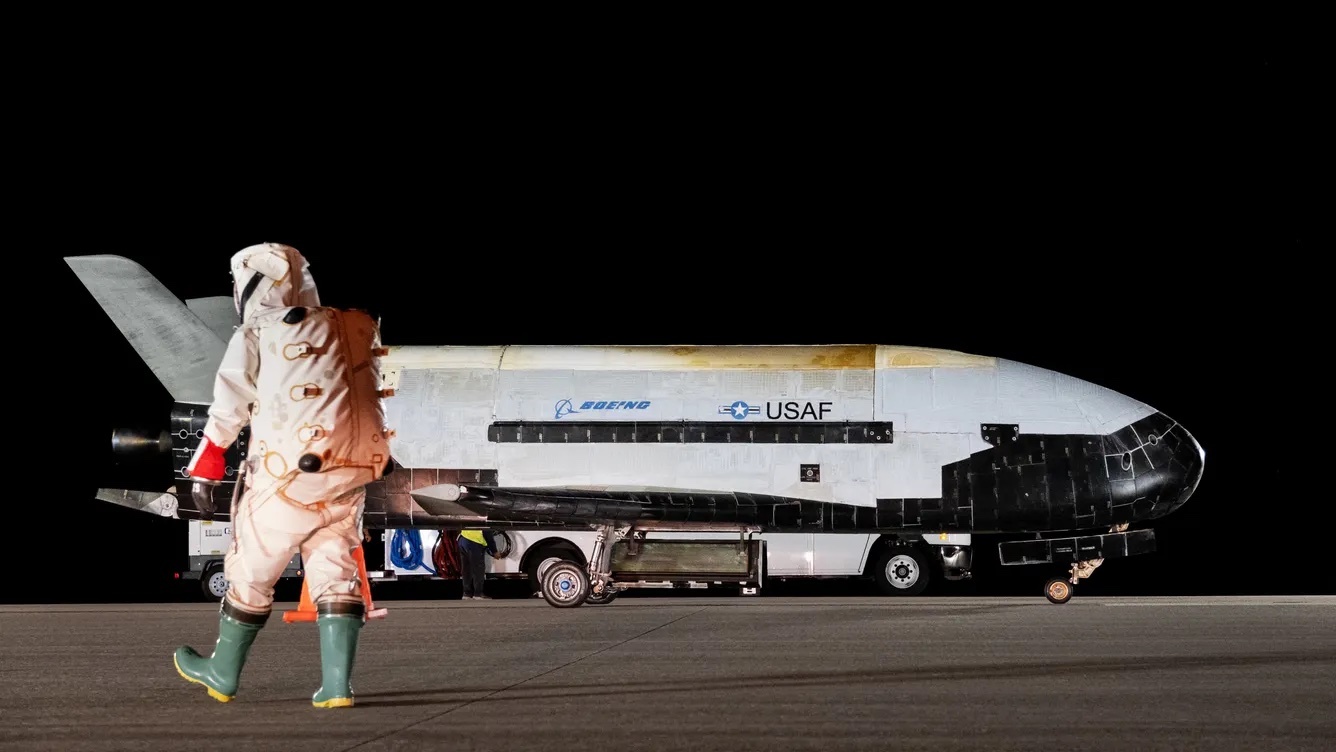
The X-37B orbital test vehicle on KSC's Launch and Landing Facility after concluding its sixth successful mission. (Image: Staff Sgt. Adam Shanks/U.S. Space Force)
The spaceplane is an orbital test platform for different test and experimentation missions, some of which are classified. This seventh mission, known as OTV-7, will fly unclassified and classified experiments.
TURKEY, CRANBERRY SAUCE HEADED TO SPACE AS SPACEX LAUNCHES HOLIDAY SUPPLIES TO ISS
A NASA experiment called Seeds-2 will expose plant seeds to radiation during long-duration spaceflight. A previous version of the experiment flew on X-37B's last mission for more than 900 days.
Record-breaking spaceflight
X-37B has set new records for time in orbit with each flight.
According to the spaceplane manufacturer Boeing, X-37B spent 908 days in orbit during its last mission, setting a new endurance record. Prior to the most recent mission, the space plane was in orbit for 780 days before returning to Earth in October 2019.
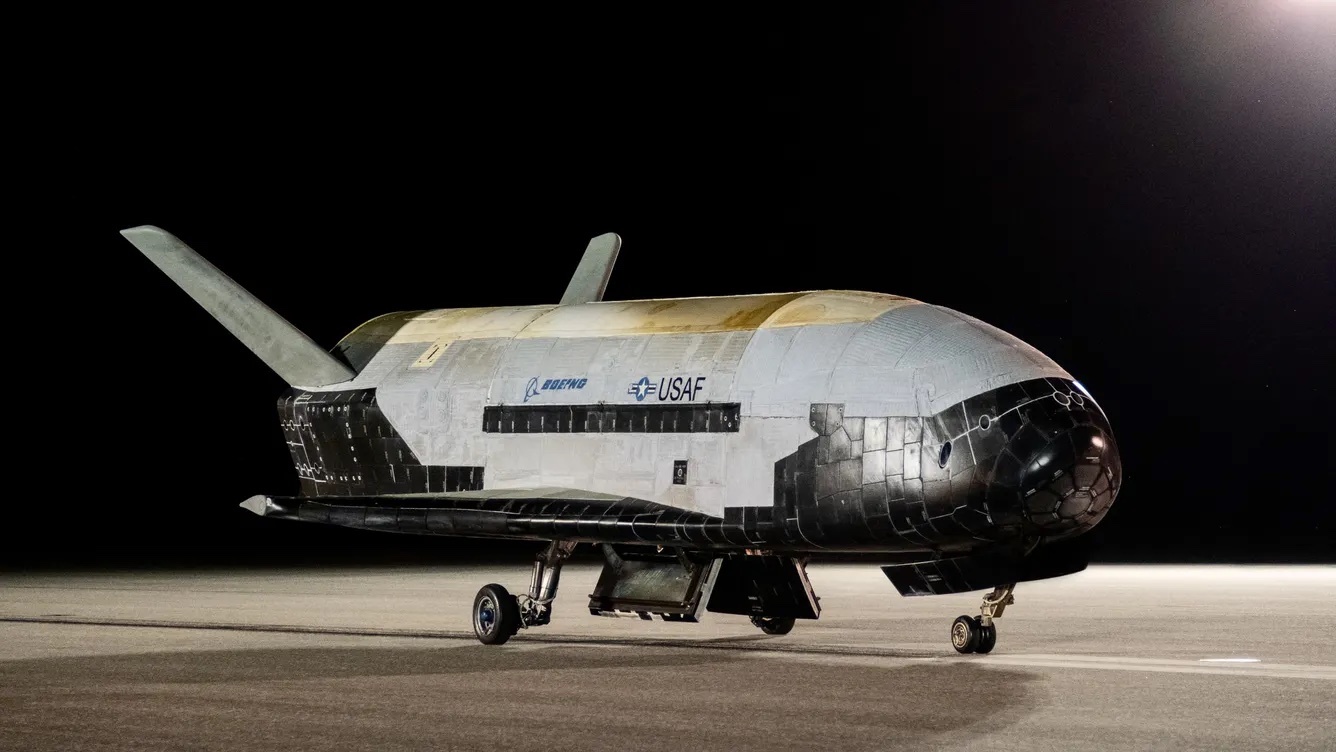
The X-37B orbital test vehicle on KSC's Launch and Landing Facility after concluding its sixth successful mission. (Image: Staff Sgt. Adam Shanks/U.S. Space Force)
X-37B's last mission ended in November 2022 after more than 900 days in orbit on a mission for the U.S. Air Force and U.S. Space Force. The spaceplane lands on the former space shuttle runway at Kennedy Space Center – now called the Launch and Landing Facility.
Information regarding when the spaceplane will land is kept confidential and, last year, the only sign of the landing to residents along the Space Coast was the sound of sonic booms when X-37B landed.
Quelle: FOXWeather
----
Update: 24.11.2023
.
SpaceX’s Falcon Heavy to launch X-37B Spaceplane
In a bit of a surprise, the USSF-52 mission will launch atop the Falcon Heavy no earlier than December 8th from Launch Complex 39A at Kennedy Space Center in Florida.
The USSF-52 mission has been scheduled off and on for quite a long time on the range schedule but kept getting pushed back due to payload delays, now we know what that payload is, the X-37B. The $130 million USSF-52 contract was awarded to SpaceX in June 2018 by the United States Air Force, then known as the AFSPC-52 mission and originally scheduled for 2020.
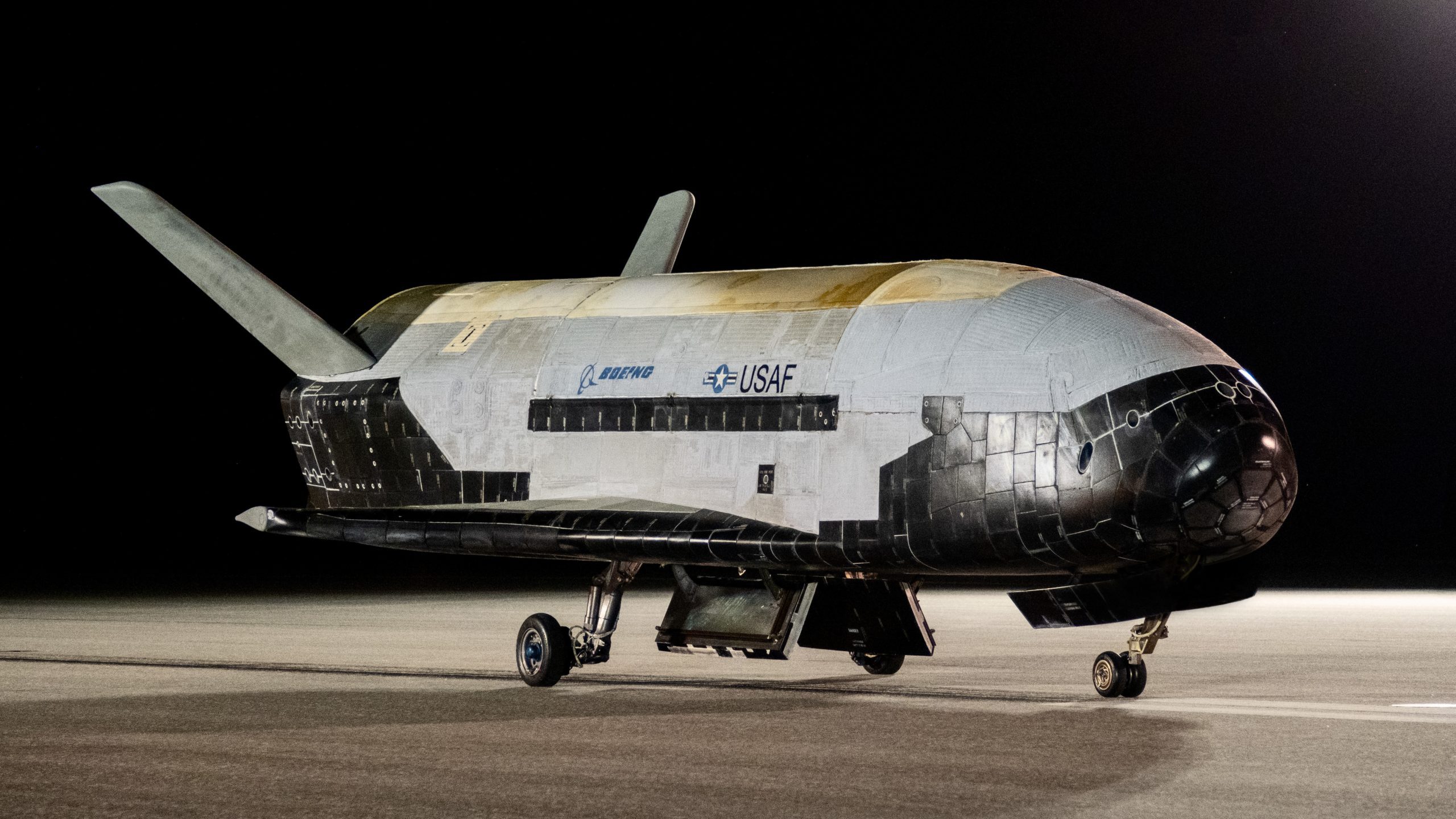
X-37B after its most recent mission on the Launch and Landing Facility at Kennedy Space Center (Credit: U.S. Air Force)
Previously, the X-37B has gotten its ride to space via the Atlas V (5 times) and the Falcon 9 (1 time). Its most recent flight launched on the Atlas V in May 2020 and spent 908 days orbiting our planet and landed in November 2022. All previous missions launched into low Earth orbit, and while the exact planned orbit is classified, it is likely the orbit will be a bit higher, taking advantage of the Falcon Heavy performance.
There are 2 known operational X-37B orbital vehicles, but it is currently unconfirmed which vehicle will be flying atop the Falcon Heavy.
As for the Falcon Heavy cores assigned to this mission, Booster 1064 and 1065 will be the side booster and landing back at Landing Zones 1 and 2. The center core is Booster 1084, making its first and final flight, as it will be expended and splash down in the Atlantic Ocean.
B1064 and B1065 have both made 4 flights to date, previously launching USSF-44, USSF-67, Echostar 24, and most recently, the Psyche mission for NASA.
SpaceX is currently switching Launch Complex 39A from the Falcon 9 configuration to the Falcon Heavy setup, which generally takes a couple of weeks at least.
If this launch holds to the schedule, this will be the 5th Falcon Heavy launch of 2023.
Quelle: TESLARATI
----
Update: 4.12.2023
.
Space Systems Command, SpaceX prepare to launch third Falcon Heavy with National Security Payload for the U.S. Space Force
Summary: Space Systems Command (SSC) and its industry partners plan the upcoming U.S. Space Force (USSF)-52 mission carrying the seventh mission of the X-37B Orbital Test Vehicle.
EL SEGUNDO, Calif. – The Assured Access to Space (AATS) Directorate of Space Systems Command (SSC) and SpaceX are preparing a Falcon Heavy rocket for the National Security Space Launch (NSSL) program. The mission, designated U.S. Space Force (USSF)-52, is targeted to lift off December 10, 2023, from historic Launch Complex 39A (LC-39A) at NASA’s Kennedy Space Center in Florida.
The Falcon Heavy rocket will be launching the seventh mission of the X-37B Orbital Test Vehicle, an experimental test program to demonstrate technologies for a reliable, reusable, unmanned space test platform for the U.S. Space Force.
The exact time and launch window will be released as the launch date approaches. USSF-52 is the fifth NSSL mission this year for the AATS launch team.
“Our national security space launches transport our most important capabilities into orbit,” said Brig. Gen. Kristin Panzenhagen, Program Executive Officer for Assured Access to Space and Commander, Space Launch Delta 45. “We partner closely with our launch service providers, and the entire team is focused on executing a successful mission.”
In June 2018, SpaceX’s Falcon Heavy rocket was selected to launch USSF-52, becoming the first Falcon Heavy on contract for a NSSL mission. After contract award, a change in mission requirements provided an opportunity to use flight-proven side boosters. This will be fifth flight
for the side boosters that previously supported USSF-44, USSF-67, Hughes JUPITER 3, and NASA’s Psyche mission. Those flights were in November 2022, and January, July, and October of this year, respectively.
Rapid, reusable rockets benefit all launch customers, creating cost effective access to space while providing both flexibility and additional opportunities to launch missions to orbit as building a new booster every time is not required.
“We benefit greatly from our partnerships with other government agencies and from commercially derived developments,” said Dr. Walt Lauderdale, Mission Director and lead for Falcon Systems and Operations at SSC. “When we look at the upswing in the launch tempo, adapting to change is our standard operating procedure that gives us the capacity and throughput we will need to support future national security space requirements.”
Space Systems Command is the U.S. Space Force’s field command responsible for acquiring, developing, and delivering resilient capabilities and groundbreaking technologies to protect our nation’s strategic advantage in and from space. SSC manages a $15 billion space acquisition budget for the Department of Defense and works in partnership with joint forces, industry, government agencies, academic and allied organizations to accelerate innovation. Our actions today are making the world a better space for tomorrow.
Quelle: Space Systems Command (SSC)
----
Update: 8.12.2023
.
Next, SpaceX will follow Thursday's Starlink mission by launching a Falcon Heavy rocket Sunday to carry the Space Force's secretive X-37B robotic space plane into orbit.
The Falcon Heavy's twin outer boosters are expected to generate sonic booms along the Space Coast by descending to Landing Zones 1 and 2 at Cape Canaveral Space Force Station. More details:
- Location: Pad 39A at Kennedy Space Center.
- Launch time: 8:14 p.m., opening of 10-minute window.
- Length of X-37B space plane mission in orbit: Unknown.
Quelle: Florida Today
----
Update: 9.12.2023
.
Space Force sets Sunday night liftoff time for X-37B space plane's mystery mission in orbit
After the Space Force's robotic X-37B Orbital Test Vehicle launches again Sunday night, what types of classified payloads will it carry into space?
What secret missions will the uncrewed military space plane accomplish 150 to 500 miles above the Earth's surface?
And how long will the black-and-white miniature space shuttle remain in orbit — considering that its last marathon flight lasted 908 days?
“It's a test platform that allows them to collect a bunch of data in a relatively controlled environment in the cargo bay of the space plane, the X-37B, over a period of time in orbit and see how well those sensors perform, how well they are immune to the radiation environment of space," said Don Platt, director of the Florida Institute of Technology's Spaceport Graduate Center in Titusville.
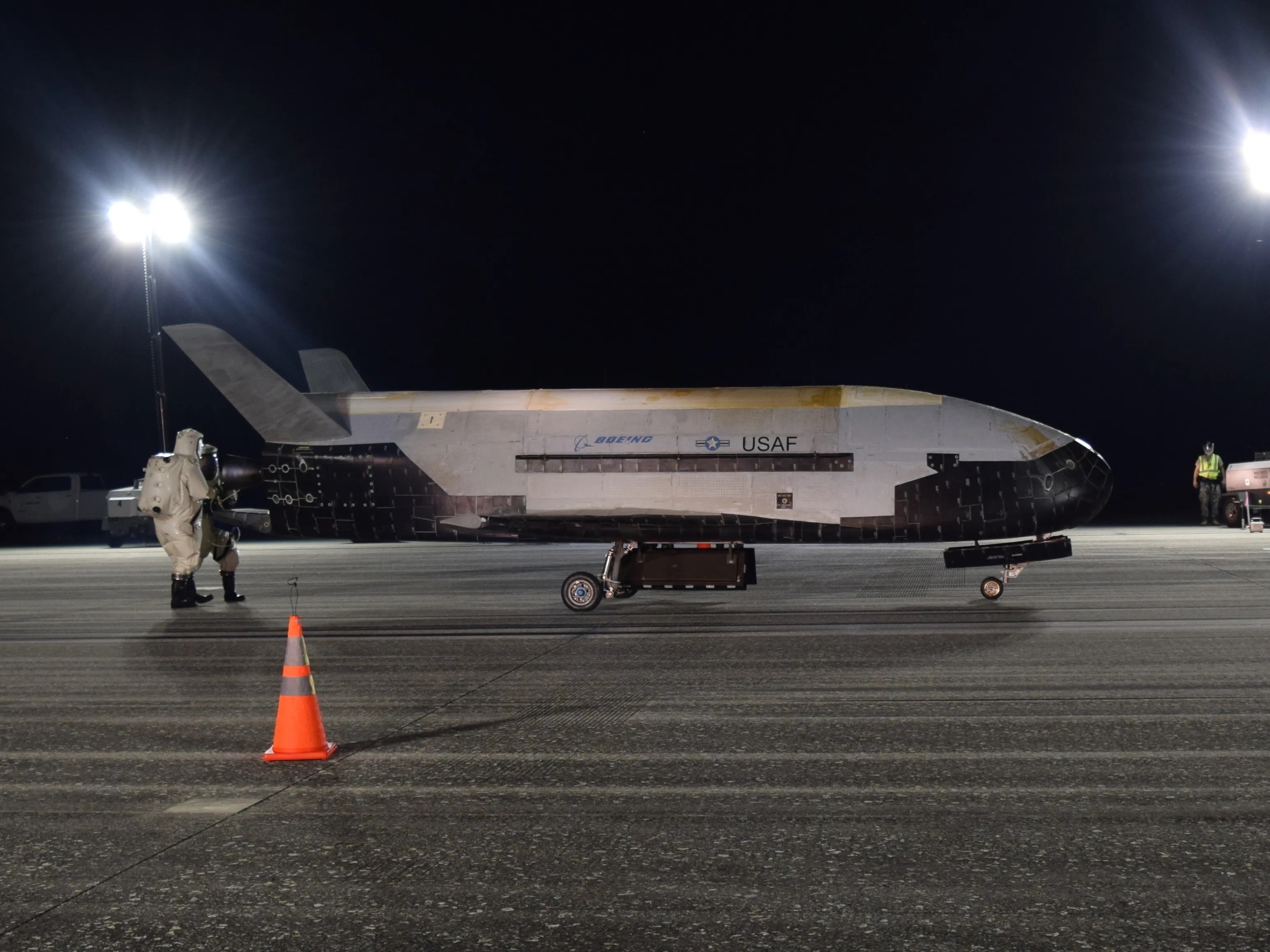
"And then they can bring it back to the Earth for further analysis — which is a tremendous advantage over just launching a satellite in orbit and collecting data from it. Because at the end of the mission, you normally don't have any way to get that satellite back," Platt said.
"So it's really, I think, a test platform for new technology so they can see how it performs. And that's one reason why the space plane will stay up for over a year, because they can build up a good-sized database on the performance of that technology and expose it to the space environment for a long period of time," he said.
At 8:14 p.m. EST Sunday, a triple-core SpaceX Falcon Heavy rocket is scheduled to lift off from NASA's Kennedy Space Center and carry the Boeing-built, 29-foot-long X-37B into orbit for its seventh secretive mission.
Will SpaceX also attempt to launch its next Starlink mission Sunday night from nearby Cape Canaveral Space Force Station? Stay tuned. The National Geospatial-Intelligence Agency has issued a rocket launch navigational warning effective from 11 p.m. Sunday to 3:31 a.m. Monday — which mirrors the times of recent Falcon 9 launches. But SpaceX has yet to make a public announcement.
More details on Sunday's X-37B mission:
- Launch window: 10 minutes.
- Location: Pad 39A.
- Booster landings: Cape Canaveral Space Force Station.
“We’re nearly complete with the pre-launch work for our next National Security Space launch, which is the third Falcon Heavy used to launch a national security payload,” Brig. Gen. Kristin Panzenhagen, who commands Space Launch Delta 45, said in a Thursday press release.
“Our team has done amazing work to prepare for this critical launch, and we’re doing even more behind the scenes. We are honing our processes to make our launch capabilities even more responsive to national security needs," Panzenhagen said.
After stage separation, the Falcon Heavy's twin boosters will trigger Space Coast sonic booms by returning to terra firma at Landing Zones 1 and 2 at Cape Canaveral Space Force Station.
Space Force officials declined a request for further comment on Sunday's mission. A Nov. 8 press release briefly said the space plane will enable "multiple cutting-edge experiments," such as:
- Operating the reusable space plane in new orbital regimes.
- Experimenting with future space domain awareness technologies
- Investigating effects of harsh radiation on plant seeds provided by NASA, collecting data for future long-duration crewed space missions.
"If we recall, in the early days of the space shuttle — definitely before the Challenger disaster — the military had top-secret shuttle missions. And of course, they were only up for about two weeks," Platt said.
"But that was probably a prelude to this kind of capability now that can be done with our new technology in a robotic fashion, without needing humans," he said.
The X-37B last launched in May 2020 atop a United Launch Alliance Atlas V rocket from Cape Canaveral Air Force Station. During that mission, the spacecraft carried a Naval Research Laboratory photovoltaic radio-frequency antenna module experiment; two NASA experiments studying radiation effects; and FalconSat-8, a small satellite developed by the U.S. Air Force Academy and sponsored by the Air Force Research Laboratory.
The autonomous space plane spent a record 908 days in low-Earth orbit before wrapping up its mission in November 2022 — and generating sonic booms across Central Florida before touching down at KSC's Launch and Landing Facility.
"Another thing: Traditionally, space planes have low G-forces during reentry. And so, this is good for any sensitive technology that might otherwise be damaged on reentry in a capsule that has a higher level of G-force as it goes back through the atmosphere to land back on the Earth," Platt said.
Quelle: Florida Today
----
Update: 11.12.2023
.
SpaceX delays Falcon Heavy X-37B launch to Monday; Starlink window still open later tonight
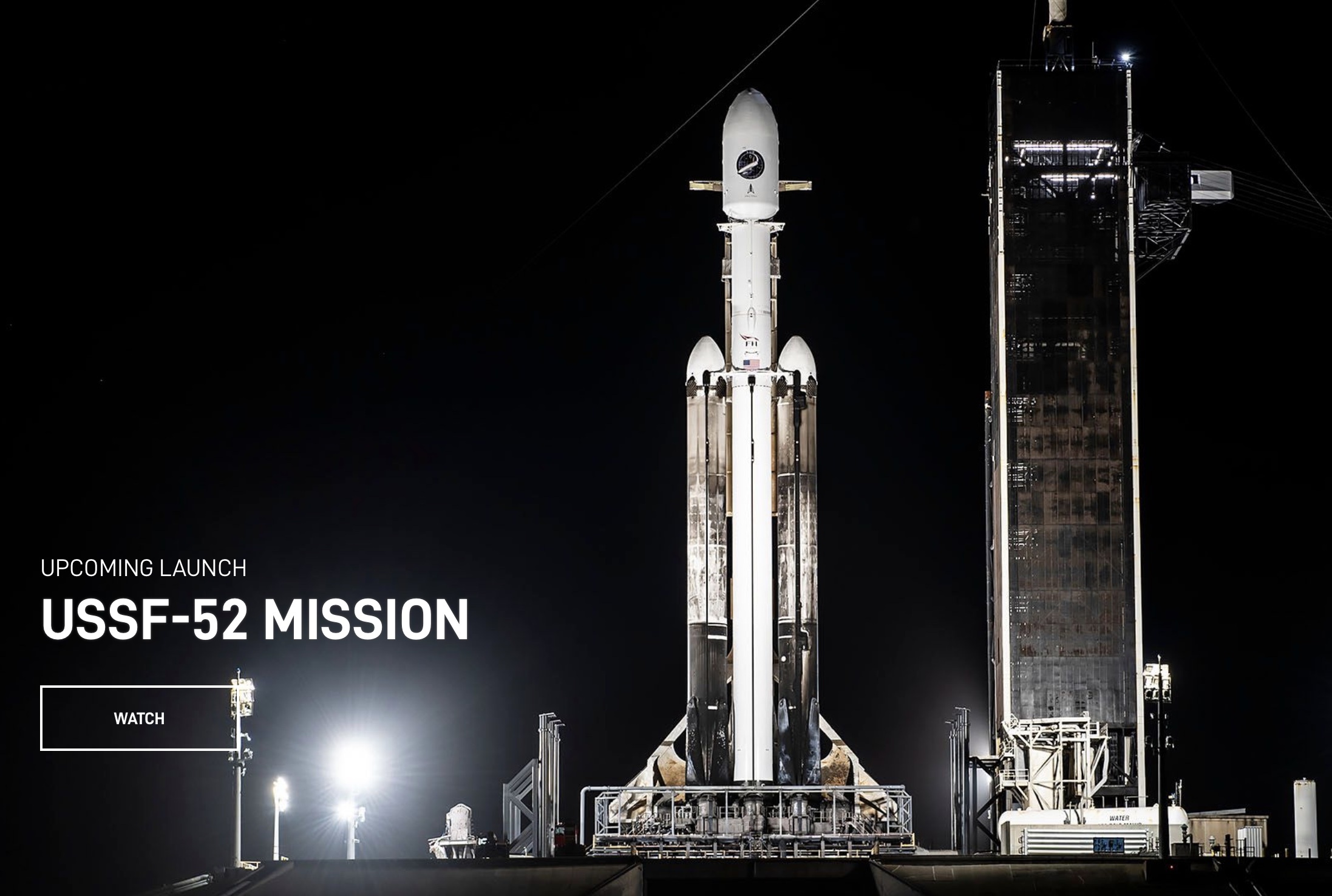
Facing a stormy weather forecast, SpaceX is pushing back its Falcon Heavy rocket launch by 24 hours to send the mysterious Space Force X-37B Orbital Test Vehicle on its next secret mission.
SpaceX is now targeting 8:14 p.m. EST Monday to launch a triple-core Falcon Heavy from NASA's Kennedy Space Center on the USSF-52 national security mission.
The Space Force's 45th Weather Squadron forecasts the odds of "go for launch" weather at 70% Monday night, compared with only 40% tonight as a "vigorous" cold front sweeps across the Space Coast, spawning shower activity, winds and cumulous clouds.
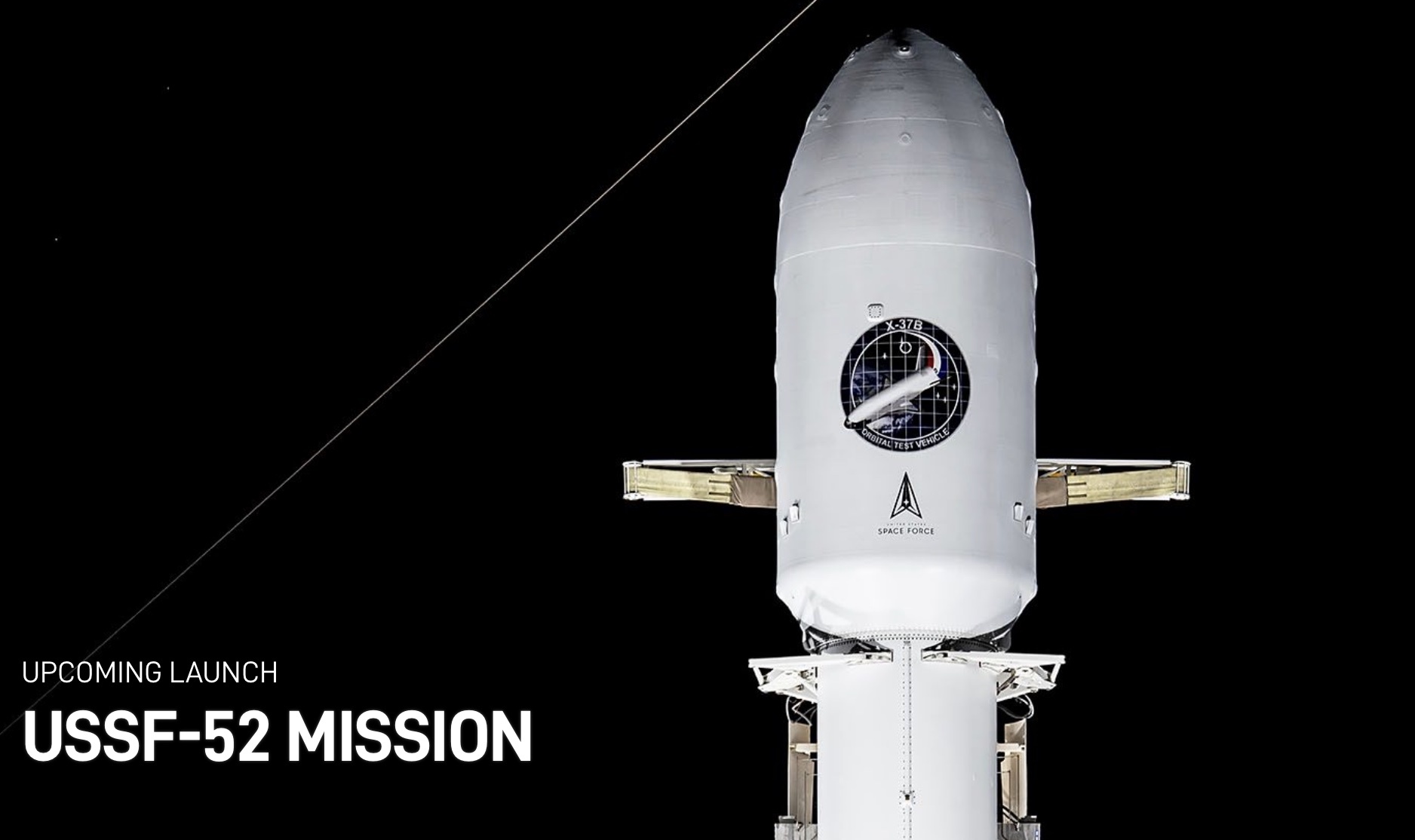
"The team will use the time to complete additional pre-launch check outs," SpaceX said of the postponement in a tweet this morning.
Meanwhile — though SpaceX has yet to confirm this mission — a Starlink launch window opens today from 11 p.m. to 3 a.m. Monday. Details: A Falcon 9 rocket will carry another batch of Starlink internet satellites into low-Earth orbit from Launch Complex 40 at Cape Canaveral Space Force Station.
However, the 45th Weather Squadron only predicts 20% favorable odds for this Starlink 6-34 mission early on during tonight's four-hour launch window. But odds should increase to 50% as the evening progresses.
Check back for live FLORIDA TODAY Space Team launch coverage updates of the Starlink mission on this page, starting 90 minutes before launch. When SpaceX's live webcast hosted on X (formerly Twitter) becomes available about five minutes before liftoff, it will be posted at the top of this page.
Quelle: Florida Today
----
Update: 17.12.2023
.
SpaceX Falcon Heavy launch of X-37B space plane now targeted for Dec. 28

